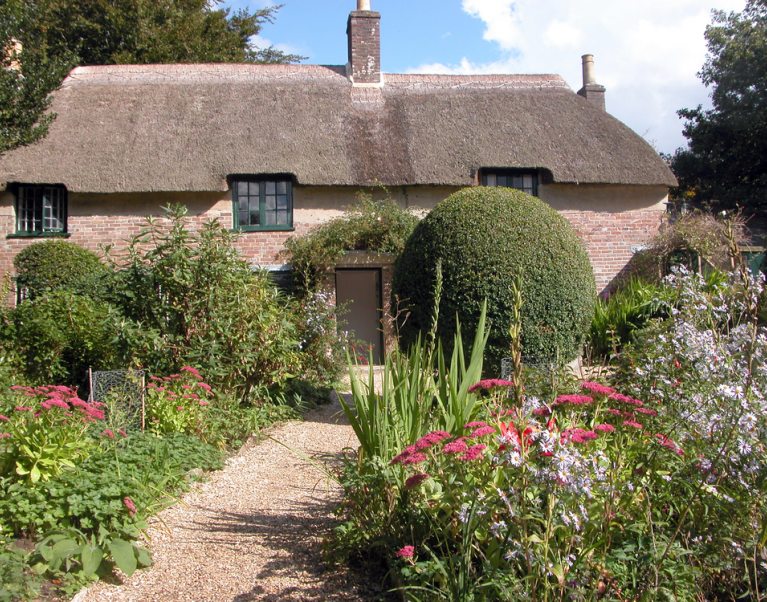23rd January, 2020
“Our lives are overcrowded, over-excited, over-strained. We all want quiet. We all want beauty. We all need space. Unless we have it we cannot reach that sense of quiet in which whispers of better things come to us gently.”
Octavia Hill Co-founder of the National Trust
This year one of Britain’s most cherished institutions, the National Trust is celebrating 125 years of protecting and caring for our natural and cultural heritage. Originally founded in 1895 at the end of the Victorian era by Octavia Hill, a dedicated social reformer and philanthropist, who together with Canon Hardwicke Rawnsley and Sir Robert Hunter, worked hard to save green spaces in London for the poorer members of society. The result was a campaign for the opening-up of graveyards for the people, the saving of Parliament Hill from developers and then the creation of the Trust itself, so that London’s fast-disappearing green spaces could ‘be kept for the enjoyment, refreshment, and rest of those who have no country house’.
Now 125 years later the National Trust has 5 million members and looks after 500 special places.
Special People
One early supporter of the National Trust was Beatrix Potter who used income from the sale of her books to donate 16,000 hectares and 14 working farms to the Trust. Her home at Hill Top which she bought in 1905 with the proceeds of her first book ‘Peter Rabbit’ is full of her favourite things, and the house appears as if Beatrix had just stepped out for a walk. Every room contains a reference to a picture in a 'tale'. The lovely cottage garden is a haphazard mix of flowers, herbs, fruit and vegetables now lovingly conserved and a highlight on our Quintessential Lake District tour.
The birthplace of Thomas Hardy - another of our celebrated writers – is also now owned and cared for by the National Trust. Few authors have such strong associations with the natural and cultural heritage of their local area as Thomas Hardy whose works are synonymous with Dorset. This cottage, where Hardy was born in 1840, was built of cob and thatch by his great-grandfather and has been little altered since the family left. Although the garden reflects most people's idea of a typical cottage garden, with roses around the door, once inside you will discover that 19th-century rural life, with its open hearths, small windows and stone floors, was not always idyllic. Despite training as an architect, writing was Hardy's first love, and it was from here that he wrote several of his early short stories, poetry and novels including 'Under the Greenwood Tree' and 'Far from the Madding Crowd'.
In 1885 Hardy built Max Gate, an austere but sophisticated town house a short walk from the town centre of Dorchester, to show that he was part of the wealthy middle classes, to reflect his position as a successful writer, and to enable him to enter polite society. The house was named after a nearby tollgate keeper called Mack. He wrote some of his most famous novels here, including Tess of the d'Urbervilles and Jude the Obscure, as well as much of his poetry. You can explore the areas that so inspired his writing as well as visiting the cottage and his later home Max Gate on our several of our Dorset tours.
Special Places
20 percent of National Trust Land is coastal including the White Cliffs of Dover and the Needles on the South Coast of England making up some of the 780 miles of British Coastline protected by the Trust, along with twenty percent of the Lake District and the whole village of Lacock in Wiltshire. With its central grid of four streets, Lacock today looks much like it did 200 years ago. Its oldest house is older than the thirteenth century abbey but since the loss of the village's main source of income from wool in the nineteenth century, new development has been minimal. Today it will be familiar to many as a film location with some of the village’s most famous appearances in 'Downton Abbey', the BBC’s 'Pride and Prejudice' and 'Cranford', and the films such as 'Harry Potter and the Half-Blood Prince'. There are a couple of lovely hostelries in Lacock and a delightful stop on ‘A Cotswold Ride to Bath’.
With a shared belief in the importance of historic places and green spaces Hill, Rawnsley and Hunter fought to preserve them for everyone’s ‘enjoyment, refreshment and rest’. These values are still at the heart of the National Trust and has enabled innumerable natural and architectural treasures to be preserved for the enjoyment of all - and we will be forever grateful for their foresight.
Posted by: Nicola Smith
Tags: Cycling holidays, Don't miss, Family fun, Hidden gems, History, Insider info, Tailor-made by us, Walking holidays

